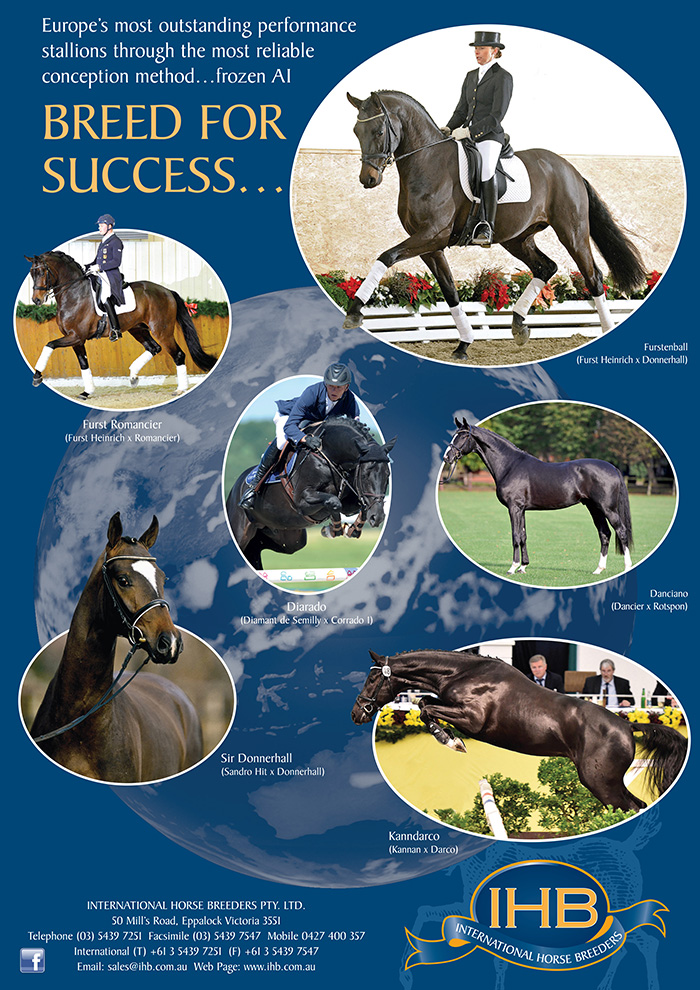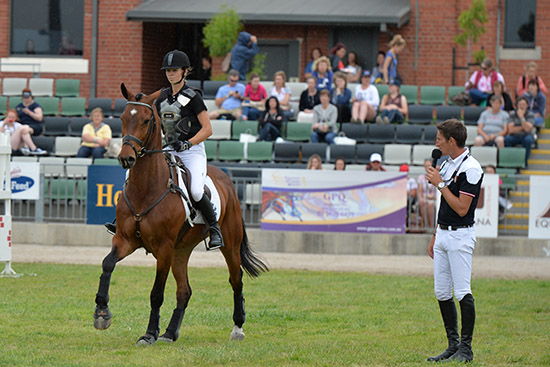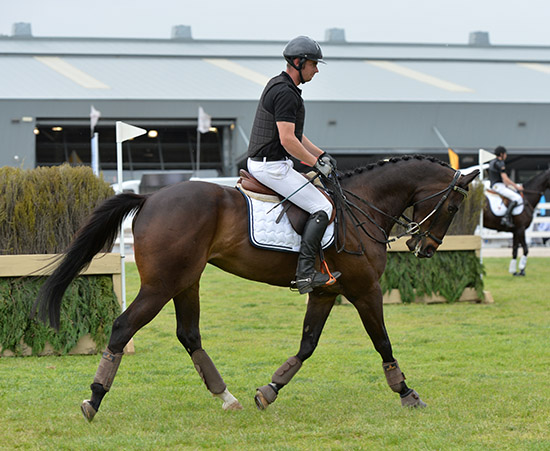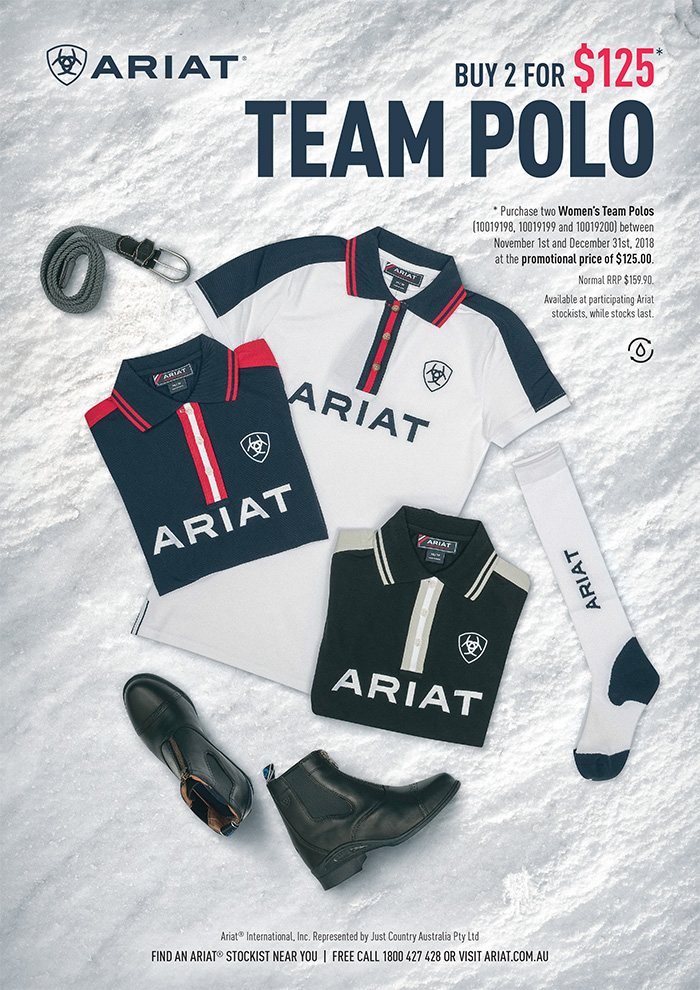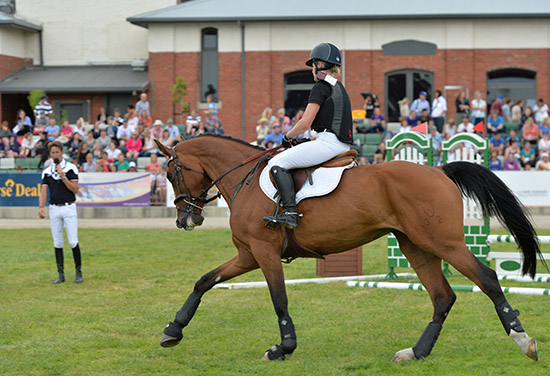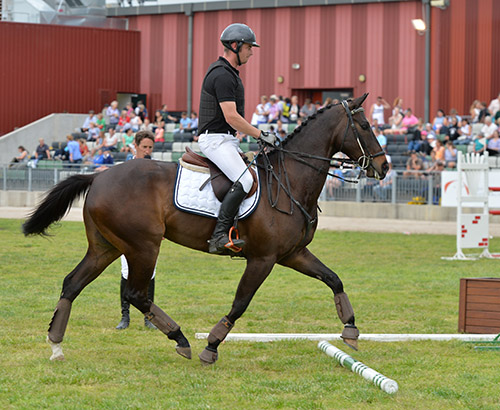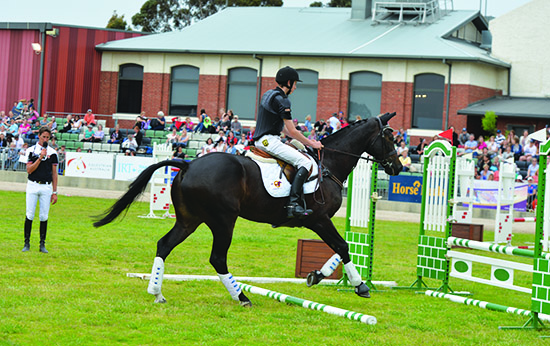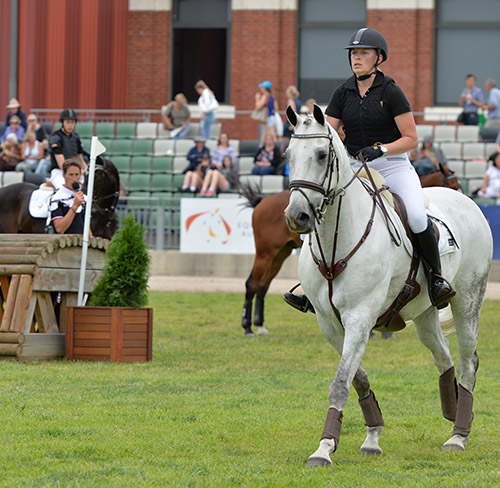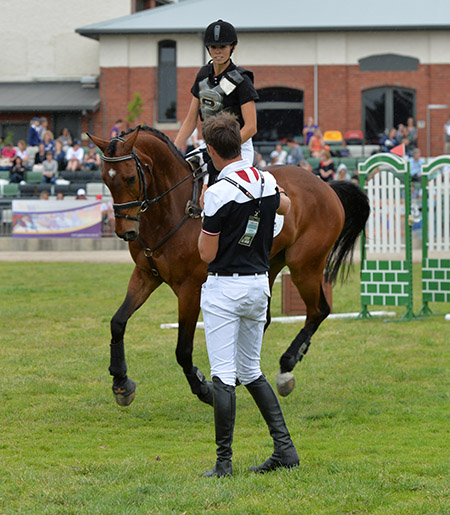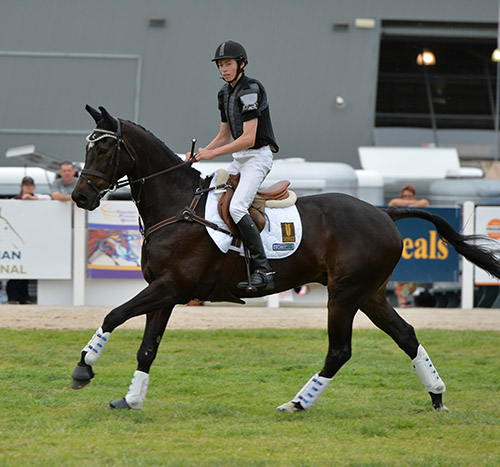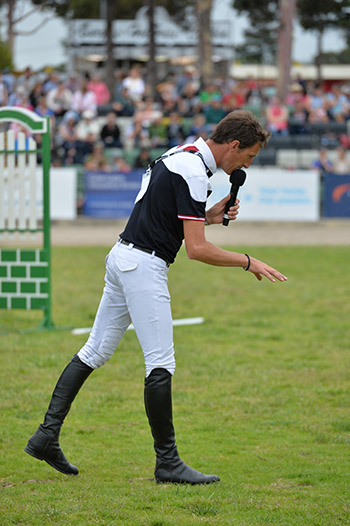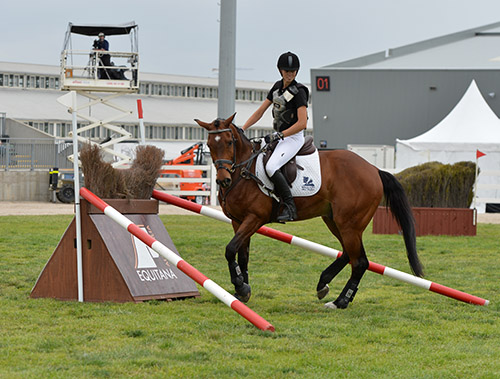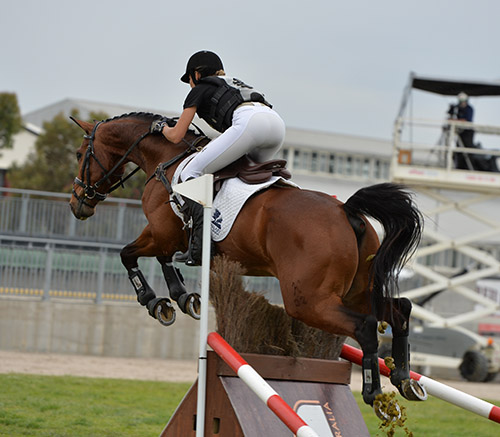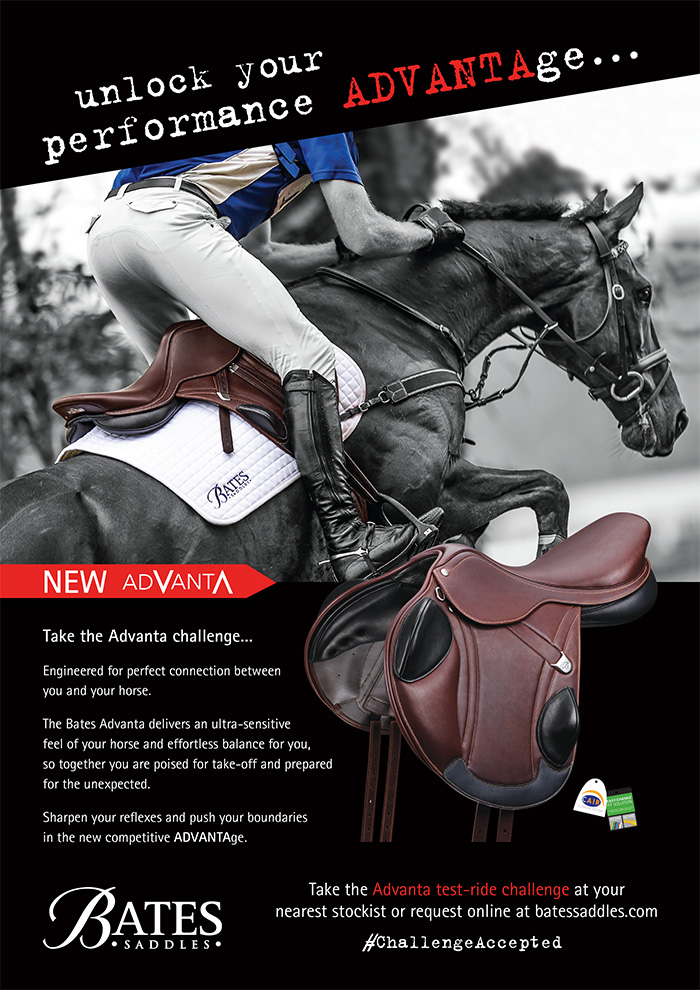The Master Class oft times bears about the same relationship to real training, that Masterchef does to real cooking. It can all too easily become let’s-give-the-punters-a-thrill with serious horsemanship thrown out the window.
Not so with Dirk Schrade.
Actually, the German eventer’s visit couldn’t have come at a better time, right now there is some serious soul searching going on about where we are at on the world eventing stage, and what we have to do to re-gain some of our former glory. And guess what? The answer is distressingly simple: hard work, more professionalism, more attention to the details. It has become all-too-easy to be a super star in the very small Aussie pond, only to find when you hit the big time, that the rest of the world is operating on another level altogether – we might be producing teams that would have been competitive in the 1990s, it’s just that the rest of the world has moved on since then…
There wasn’t anything startling or new about Dirk’s instruction, it was just that it was so spot on, so tailored to each individual rider, and each horse, at that point in time.
Surprise, it all starts with a good warm up! “The warm up for cross country schooling is not much different to the warm up for dressage or showjumping. If you get a nice contact, and a better balance, then cross-country schooling gets easier. The better the horse is on the aids, the less spooky it will be – and a good warm up will make the lazy horse more motivated. Our aim is simple: on the aids, nice contact, well balanced.”
Dale Flynn was riding his one star gelding, Aurum Simply Brilliant:
“Dale, get the horse moving forward, get the tension out, when he follows you, there will be a nicer contact. Don’t use the gag so much, use the normal rein. Canter to lose the tension before you come back to trot. Don’t sit so heavy, you are tall and this is not such a tall horse. Don’t use your body so much, the quieter you sit, the better they jump, when the horse can’t feel you, then it gets more like free jumping, and we know how great they free jump…”
“Lots of riders make the mistake when they start, they want a soft, light contact – it’s better to take a stronger, more consistent contact, that’s the first step, contact – then work on the quality of the contact.”
“Dale, get more in the middle of your saddle, and your lower leg back. In Australia, everyone seems a bit afraid to use their lower leg. The lower leg calms the horse, you lightly hold the horse with the lower leg and that gives it confidence. A very clever person once told it to me like this – if someone is standing behind you and touching you every now and then, then you are afraid, but if that person puts their hands on your ribs and stays with your breathing, then you relax, it’s the same with your horse. Relax the top of lower leg and let it sit with the horse.”
“Ride many turning lines, the turns will help keep the horse with you. The turn will always help to get him listening to you, and that is what you need for these modern courses… It’s not bold and brave any more, but with you, between leg and hand…”
Rachael Lee was riding the imported Holsteiner mare, Lansina, purchased from Stuart Tinney earlier this year. Rachael has only taken over the ride in June, and started competing at one star level. The pair had their first two star event at the beginning of this November.
“Rachael your mare looks good to ride, but the canter is too slow for jumping. It is no good to only warm up in a working canter and then when you get on the course and have to go faster, the horse runs away. Warm up in the canter that you need.”
“It’s no different riding a showjumping fence to a cross country fence. When you get a horse that has done showjumping, it is simple to take them eventing if they have been well ridden on the flat and know how to jump. Then it is just teaching them the cross country fences, water, ditch, coffin, sure that takes time but it is not difficult. You can make an eventer out of almost every horse, it is not so much a question of quality, more trust.”
It was time to actually jump a fence or two, and while he recognized that it was not so comfortable for the rider, Dirk wanted his riders to start jumping out of a trot…
“Jumping out of a trot teaches the horse a lot, you can get them looking and concentrating in trot – if you start out in canter, they can get a bit wild. Dale, leave your leg on the horse from the first moment you start to guide him, right until the jump. I always try to change the rein over the fence to make sure the horse is listening to me. Everyone can jump a simple fence, we want to be able to jump a course, that’s why you should change the rein on every fence.”
“Your eyes are very important, never look down because the eyes control our body. Look to the fence, look to the line and your body will ride the line. When I see runouts on skinny fences, it’s because the rider’s eyes are down. 95% of runouts are a mistake of the rider, the rider loses concentration on the next fence and the line, and an accident happens.”
Sam Jeffree was riding his one star competitor, Jaybee Calypso:
“Sam, your horse looks a bit spooky so for the first few jumps, sitting canter, later you can go to a light seat. Into the saddle for the jump, and in between the jumps, light seat.”
The attention turns to Lucy Yeomans and her three star horse, RSB Bluejay.
“Lucy, trot forward into a nice contact for jumping, don’t try and fiddle him down, the horse must be settled in the contact so he keeps his concentration on the fence, if you are fiddling with his mouth you will take away his attention…”
“Ask for more contact and he will settle into your contact.”
“The horses are more settled now, we are ready to jump out of a canter, and once we start cantering, keep cantering, keep a nice rhythm, that gets the horse more focused than riding them stop/go.”
“Rachael, now you have her a bit more open in the canter, you can come to the roll top two or three times, until she settles. Now you can start on the light seat in between, on the turn, sit, and be careful not to block your elbows and ruin the rhythm. Okay she was a bit running to the fence, but take advantage of that, ride her a bit more and she will settle down.”
“Dale, you are too often against the horse, have him more free, more open. Leave your hands down and ride your canter, don’t land and pull. If you soften every time you come to a fence, he will learn, get him more open, he is too short in the neck and can’t use his body.”
Michelle Robson was riding Eastern Star Capone, a nine-year-old imported Warmblood by Contendro. Michelle has been riding Capone for three years, competing him at one star level in the last year.
“Michelle, he will be a bit more excited now, use the turns to slow him so you don’t have to stop with your hands. Look to the fence, don’t look down, keep the rhythm. Don’t jump in front of the horse, if the horse gets too deep, stay back. Think of what it would be like with someone sitting on our shoulders, if that person leans forward, it would be very hard to balance. The biggest mistake is to get forward in front of the horse.”
“Sam. I like your position as a rider, it’s a nice light seat that makes it easy for the horse and it is an economical way for the rider. When the horse’s back is ‘empty’, it is easy for him to travel. You could have shorter stirrups, here in Australia, so many riders have long stirrups. I prefer shorter stirrups because then you are better balanced and much lighter – see then, he pushed with his body and brings the horse out of balance. Just let the horse move away from your leg, not from your upper body.”
“I like a longer rein because on cross country, if the horse stumbles and you are in front of the saddle, with a short rein, then you have the greatest chance to fall. Better a longer rein, and you back a bit, and when the horse has a longer neck, he is better balanced – shorter neck and the shoulders are blocked.”
“Now let’s work on one of the modern questions – skinnies. Courses are more technical, more skinny fences, and I like it, the better you school your horse, the more chance of success. Narrows are all about training, and if you start properly you should have no problems, it’s only when you over do it, that the horse loses confidence and starts to run out.”
“Once they learn, horses like to jump skinnies, they are so quick and sharp with their eyes, but they must be taught properly. Put poles on the sides, if you don’t teach them to run out, they won’t run out. At home, even with experienced horses, every time I ride a new line, I use poles. If they only know good things, they never know bad things.”
“Rachael, that was good for the first time, now soften, and let her look to her own line. The biggest mistake the first time is to take the longer distance, then there is a chance of a run out, better when training to take the second distance, later you can open the horse up and go one stride less.”
In come Michelle and Eastern Star Capone, and just to demonstrate Dirk’s point about getting in front of the horse, she takes a little leap in the saddle, and the horse comes clattering to a halt.
“If she hadn’t been in front of the movement, the horse would have had the chance to jump. Things can go wrong, it’s nothing bad, you just need to know how to get it back. Horses are such great animals, they will learn from a good situation, and forget the bad one. But stay behind the horse, and there is a big chance the horse will sort it out, when you jump too early, there is a problem.”
“Sam, longer frame, hands down. If you have to move up, because the distance is long, don’t flap with your body, use your leg. See the problem there? The rider concentrated on the distance and didn’t let the horse read the fence, concentrate on the rhythm, don’t worry about the distance. Keep the rhythm and the horse will concentrate.”
“Lucy, even more canter. You can always open him more because he is never going to run away. Let him see the fence, hands down, use your leg, go with him, trust him, softer contact and ride him more.”
Time for another of the modern challenges, the angled fence comes next.
“You need to train them to get confident to angle a fence. First jump it straight, then change the angle, but always a pole on the open side when you start. Keep your hands down and quiet and don’t take the horse’s concentration away from the fence.”
“Lucy, you looked too long for the right spot, keep the rhythm of the canter, that is more important than half a metre closer or further, the horse has enough scope to cope. It is all about balance – inside leg to outside rein, get a better balance and you will see a nice stride earlier.”
The rain was gently drizzling, time to finish up, but it was a clinic that should have pointed the way ahead for Australian eventing…
Find the stallion you need to breed your eventer from IHB, go to www.ihb.com.au
